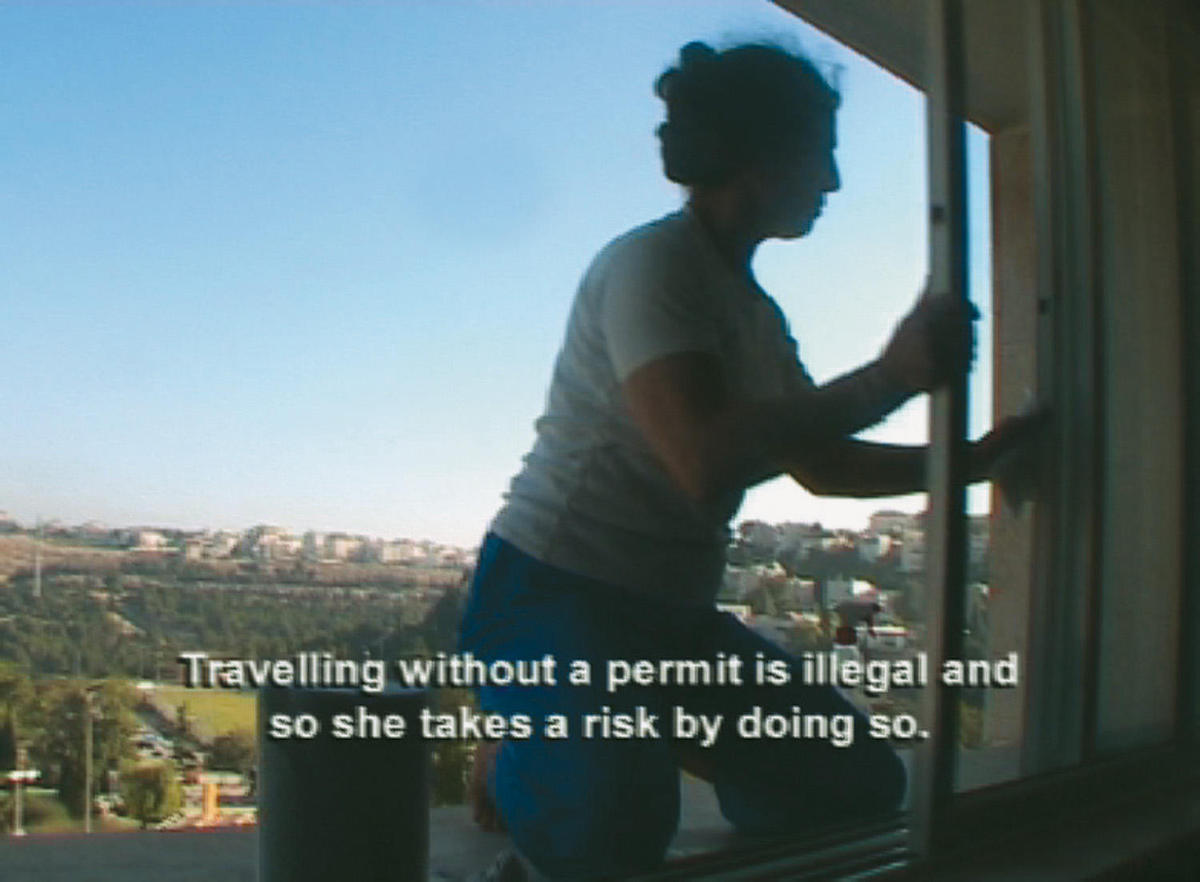
“If the reality of time spent among — not with — the Palestinians resided anywhere, it would survive between all the words that claim account of it,” wrote Jean Genet in Prisoner of Love (1986), his fiercely brilliant struggle to describe the Palestinian situation in prose form. Oreet Ashery, an Israeli artist who moved to England in the 1980s, ends the video that documents her own journey to Palestine with some of the writer’s finely wrought words. Her account was clearly influenced by Genet’s battle with how to narrate such a politically sensitive and subjective experience.
In the spring of 2005 Ashery posted a notice on the Art School Palestine website in hope of contacting a Palestinian artist. Eventually, she met Sameh Abboushi, an architect living in Ramallah. As a result of Israeli military presence there (namely tanks blocking the entrance to his office), Abboushi had to close down his practice and became an artist. They established a firm email friendship, and Ashery’s necessary journey, funded by Arts Council England, enabled her to travel to Ramallah a few days after the withdrawal from Gaza to meet Abboushi.1 The two are filmed as they walk through the city, buy some grapes and return to Abboushi’s house, where Ashery interviews him and his wife. The eighteen-minute video also includes a tour of Jerusalem with Ashery’s father and a trip to Pkiain, in northern Israel. Ashery plans to develop the short into an hour-long film that delves deeper into her journey.
This was Ashery’s first trip to Palestine and her first back to Israel in many years. The video opens with a striking shot of the Palestinian maid illegally employed by her parents, perched on a ledge and washing the windows of their Jerusalem apartment. The narration, all in subtitles, explains that the maid is unable to obtain a travel permit. With this opening scene, Ashery acknowledges her own implication in this horrifically absurd apartheid; later she notes that, as an Israeli citizen, she can only enter Ramallah illegally. When she does so, she is genuinely astonished by the Wall, the checkpoints, and what she calls the “half-baked” state of Ramallah. From Ashery’s reaction it is clear that this is a personal account, and indeed the emphasis of the Necessary Journeys project is on individual experience. She accepted their open-ended invitation to dwell on personal history, but uses her individual version of events to initiate a broader, more nuanced project.
Ashery said the hardest part was deciding what to leave out, and she is a generous interlocutor. Abboushi and his wife offer a sharp analysis of the current situation, and they call the lack of opportunities that causes Palestinian youth to leave the territories “an indirect form of deportation.” Still, the video ends on a hopeful note, conveying optimism about the possibility of Palestinian/Israeli coexistence. And Ashery’s journey has indeed borne fruit: it enabled her to meet not only Abboushi but also Reem Fadda, a Palestinian curator and director of the Ramallah-based Palestinian Association for Contemporary Art (PACA). Her Travel Diary was screened there this spring, and she will curate a film program with Fadda in June for London’s Performing Rights festival.
1 Necessary journeys, an initiative of the Arts Council England, takes its cue from the Black World initiative, exploring the ways in which art connects with film and the moving image.
